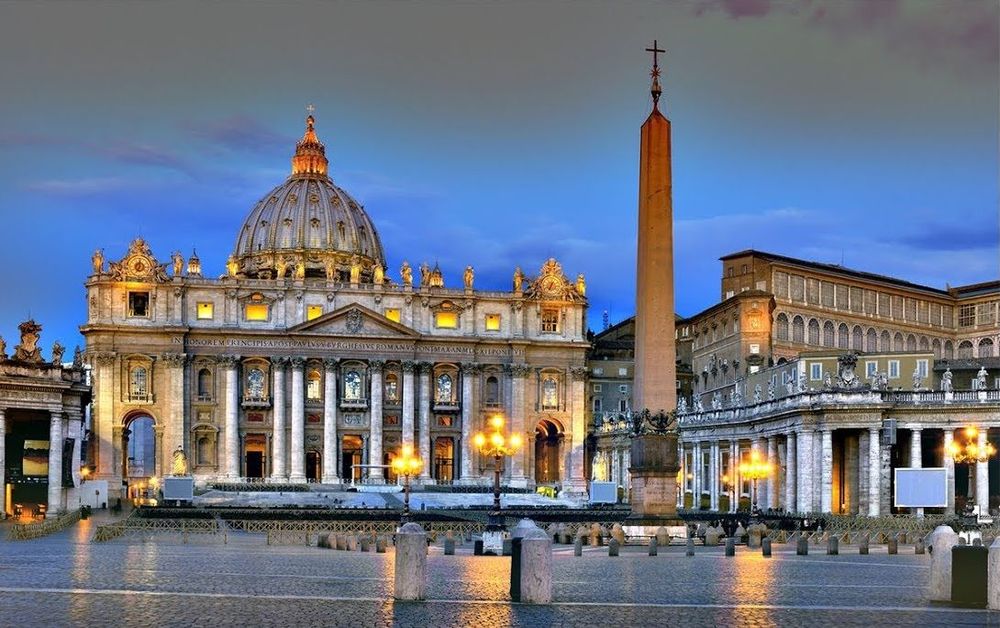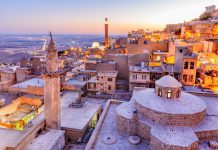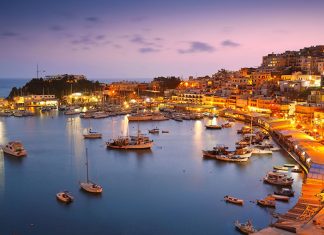More than half a century passed before the Roman “Egyptian” epic, realized by Gian Lorenzo Bernini, resumed. The magnificent fountain of the Four Rivers on Navona Square and the elephant supporting the small obelisk of Minerva. The Agonal obelisk, towering on Navona Square, can be called Roman: carved hieroglyphs depicting Egyptian deities tell about the glory of the emperor. In Rome, this obelisk decorated the temple of Isis, then Massentius moved it to his own circus. Pope Innocent X decided to erect a monument in honor of his family.
The project was first handed over to Borromini: Bernini was not in good standing with the pope at that time. But thanks to his cunning, the sculptor managed to move a competitor. Bernini has prepared a model of the future monument. His good friend Donna Olympia, a relative of the pontiff, did everything so that the pope “accidentally” saw the sample. Dad liked the idea of the master so much that the question of who to transfer the order to was instantly resolved. Bernini presented the model itself, cast in pure silver, to Donna Olympia as a token of gratitude. The monument was completed in 1652 . and became one of the most beautiful statues of Rome of the Baroque era. Four compositions, located at the corners of the base, are completed by a column aspiring upwards. Esoteric and alchemical symbols are intertwined with the biblical one — a dove with an olive branch – a sign of God’s new contract with people after the Flood.
The small obelisk of Minerva dates from 589-570 BC: the history of its creation is imprinted in hieroglyphs. It is not known when he was transported to Rome, where he was accidentally “dug up” by the Dominicans. The sketch of the elephant supporting the column was drawn by Bernini, but the execution of the sculpture was entrusted to Ercole Ferrata. This funny monument (which the Romans nicknamed the “cub” of Minerva) It was opened on July 11, 1667 by Pope Alexander VII. The inscription explains the elephant’s presence: the monolith symbolizes ancient wisdom, and the elephant is the strongest animal in the world, because “a firm forehead is needed to maintain monumental wisdom.”
At the beginning of the next century, under Pope Clement XI, an obelisk was erected in front of the Pantheon, originally forming a pair of obelisks at the Villa Chelimontana. Both were built in the era of Ramesses II, both were erected in the temple of the Sun in Heliopolis, and then transported to Rome. The Pantheon obelisk has been preserved almost in its original form and was placed in the center of a beautiful composition in the Baroque style by Philippe Barigioni, with stone dolphins and papal emblems. The top is crowned by the Albani stele (papal family) and a cross.
At the end of the XVIII century, Pope Pius VI almost “caught up” with Sixtus V in the revival of ancient obelisks. The first, opened on October 21, 1786, was erected on the Quirinal, on a magnificent square that seems suspended between heaven and earth. There are no inscriptions on its smooth trunk. The Quirinale is called the “pun obelisk”. When the architect Giovanni Antinori installed an obelisk between two statues of the Dioscuri, he had to deploy them around the monument. Here it turned out that from the surname Antinori, you can add the anagram “pop tirai”, which means: “don’t turn it over.” After the operation to establish the obelisk was completed, the composition was not very liked by the residents of the city. And one day the inscription “Opus Phidia” (The work of Phidias) was closed with another inscription: “Opus perPhidia Pti Sexti” (the work of the cunning of Pius the Sixth). Although today the composition seems harmonious, as if specially born to stand for centuries.
The second obelisk of Sallustiano, installed by Pope Pius VI on Trinita dei Monti— is Romano-Egyptian, as well as Navona, since the inscriptions were carved already in Rome (a rather unfortunate copy from the obelisk installed on the People’s Square). He once decorated the Gardens of Sallust. The exaltation was entrusted to Antinori. Opened in 1787, the obelisk successfully decorated the famous staircase leading from the Plaza de Espana to the church.
And finally, the third obelisk of Campense, installed on the Montecitorio Square, dates back to 595-589 BC (the era of Pharaoh Psametichus, who is depicted on the obelisk in the form of a sphinx). Winged scarabs support the solar disk. It was once installed in Heliopolis. In Rome, it was used as a gnomon of the August calendar clock described by Pliny the Elder, with bronze plates denoting the seasons. Erected in 1792 Antinori in the place where it was once installed by Augustus, according to the original plan, it was supposed to be used as a meridian, but the idea seemed a little outdated, and it was soon forgotten.
At the turn of the century, the new Pope Pius VII equipped the beautiful Pincio Alley and decided to decorate it with the Aureliano obelisk. He was so named by Adrian in honor of his young friend who drowned in the Nile. The inscription is in the Egyptian style of the Roman period. On August 22, 1822, the obelisk was erected under the direction of architect Giuseppe Marini on a shady alley of the park, along which the pope liked to take daytime walks.
The last of the obelisks erected in Rome in the modern era — Dogali – has a sad history. It is a kind of funerary monument in memory of the fallen Dogali. It was built under Ramesses P, and after the conquest of Egypt by the Romans decorated the temple of Isis in Rome. In 1885, a tragic event occurred in Dogali (Ethiopia), where 548 Italian soldiers died. A few months later, the architect Francesco Azzurri adapted this obelisk for a funeral structure, adding an image of a chapel niche. An obelisk with the names of all those who fell at Dogala was installed at Termini Station. He was criticized by many for his lack of taste. In the 20s, the monument was removed from the square, and now it is located in a small garden on the Terme di Dio-Cleciano street. Rome, which brought the majestic obelisks back to life, refused to recognize the last, the thirteenth, some kind of unlucky… Maybe, over time, the city will bring him back from undeserved oblivion?
The inscription on the obelisk of Minerva explains the presence of the baby elephant: the monolith symbolizes ancient wisdom, and the elephant is the strongest animal in the world, because “a firm forehead is needed to maintain monumental wisdom”












